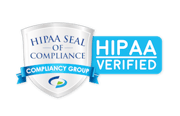I was recently asked “Why is semantic interoperability important to medication reconciliation?”
My default answer is if you are using terminology to convey information, sharing that terminology between software applications and expecting to do anything useful, semantic interoperability is not just important, it is necessary. But that would be trite… so let’s approach the answer to this question in a more verbose and systematic way. And let’s start with an underlying fundamental question.
What is medication reconciliation?
Here is how theCMS websitedefines it:
“The process ofidentifyingthemost accurate list of all medicationsthat the patient is taking,including name, dosage, frequency, and route, bycomparing the medical recordto anexternal list of medicationsobtained from a patient, hospital, or other provider.”
Here is how theInstitute for Healthcare Improvementdescribed it:
“The process ofcreatingthemost accurate listpossibleof all medicationsa patient is taking —including drug name, dosage, frequency, and route— andcomparing that listagainst thephysician’s admission, transfer, and/or discharge orders, with thegoal of providing correct medicationsto the patient atall transition pointswithin the hospital.”
My (engineering biased) definition of Medication Reconciliation is as follows:
A workflow in a clinical application where the software aggregates medication history data for the patient, from multiple sources, into a single medication history summary (a best possible medication history orBPMH) in order to provide accurate display and enhanced clinical decision support.
Why do Medication Reconciliation?
According to the World Health Organization, an up-to-date and accurate patient medication list is essential to ensure safe prescribing in any setting.
According to a Leapfrog Hospital Survey in 2012:
- 10 to 67 percent of patients have at least one prescription medication history error at hospital admission
- Medication reconciliation errors are estimated to contribute to 20 percent of adverse Drug events (ADEs) within hospitals.
The primary driver for Medication Reconciliation is patient safety through the reduction of ADEs related to an incomplete understanding of what medication the patient is on, or should be on.
It is also worth noting that medication reconciliation is also a part of Meaningful Use Stage 1:
Certification Criteria* §170.314(b)(4)
Clinical information reconciliation
Enable a user to electronically reconcile the data that represent a patient’s active medication, problem, and medication allergy list as follows. For each list type:
(i) Electronically and simultaneously display (i.e., in a single view) the data from at least two list sources in a manner that allows a user to view the data and their attributes, which must include, at a minimum, the source and last modification date.
(ii) Enable a user to create a single reconciled list of medications, medication allergies, or problems.
(iii) Enable a user to review and validate the accuracy of a final set of data and, upon a user’s confirmation, automatically update the list.
What does Semantic Interoperability have to do with it?
First, let’s demystify the term semantic interoperability.
In order to accomplish the objective of medication reconciliation we need to be prepared to take information from somewhere else and make sense of it in our application. There is a decent chance that the information we are receiving will have codes that are not the codes that our application uses. The process of translating this “other code” into a code our application can use is semantic interoperability. Most of the time this is accomplished using a concept map. So, at its most fundamental level, semantic interoperability is using a map to translate from one set of codes to another. This is how we have accomplished a form of legacy semantic interoperability for decades.
Unfortunately, the terminologies we use in healthcare are not static. Healthcare is always changing, and with it, so do the terminologies and knowledge we produce to support it. For medication reconciliation to work, we must be able to react to new and changing information in a timely manner. As a result, in order to ensure quality and timeliness, we need to be diligent about the mapping process.
When it comes to creating and maintaining a map the economics are pretty straight forward. Your options are to allocate your own resources to do it, hire consultants to do it or license software to semi-automate the process, like our product, Symedical. Regardless of the approach you choose, mapping is not a one-time event, it is a long term commitment.
Code-Based Interoperability
The national library of medicine provides a data service called RxNorm. The original objective of RxNorm was to support interoperability between known drug terminologies. More information on RxNorm can be foundhere.
There is a common misconception that RxNorm solves the medication interoperability problem. The truth is RxNorm can help but it does not solve the problem. A code-based map (or Meta-thesaurus) can be very useful if the following conditions are true.
2) The code always matches the term (a human has not overridden the term)
3) The source never changes the meaning of a code
4) A new term is not introduced at the source before it is introduced in the map
Having a mechanism that maps the term on a semantic level, based on the term itself not just the code, is important if you want to avoid service failures and potentially patient safety risk.
The important thing to remember is that static maps were something that was “good enough” in the past when anecdotal interoperability was all that was required. As we increase the degree to which we leverage external information we increase the need for a more dynamic and “aware” interoperability mechanism.
The Medication Terminology Landscape
RxNorm is a fairly decent standard terminology for medications that is available in the public domain here in the US. There are also a number of very good commercial medication compendia that are commonly used:
- Cerner-Multum
- Elsevier-Gold Standard
- Hearst Health-fdbHealth
- Truven Health-Micromedex
- Wolters Kluwer-Medi-Spa/span>
In the US we also have another terminology that is used quite a bit, the National Drug Code or NDC. This is a product level code that commonly represents packaging information in addition to the medication itself.
While having a plethora of quality terminology options is good on many levels, it also increases the likelihood that we will receive a code that we do not understand. We also need to remember that we might receive patient medication history data that is using a home grown code or even free text information.

Beyond interoperability
Just realizing that we require semantic interoperability to accomplish the objective of medication reconciliation is not all we need to do it well.
聚合和翻译药物编码是一个basic requirement, but in order to establish the “best possible medication history” we will need to perform some additional semantic and / or ontological magic.
Unstructured Text
我们在医疗保健系统的信息ems today is locked in unstructured notes. Many of these notes like a history of present illness, medication questionnaires and previous inpatient visit discharge notes may contain relevant history. Having the ability to extract medication history details from unstructured text can provide important information that you might otherwise miss. Having a semantic platform that can be configured to target drug history or order details and turn that information into computable codes and values can provide a whole new dimension of information that would otherwise be lost.
Medication History Summarization
When you receive information from your external sources, structured or unstructured, and you go through the process of translating the data to a terminology your system understands, you still have another potential issue. It is likely that you will be inundated with duplicated information and potential noise. In order to consolidate this information into a best possible medication history you will need to synthesize a medication history summary. This process removes the duplicates and organizes the medication history in a way that makes sense to the clinician. In addition, that medication history will now make sense to the clinical decision support algorithms that are looking for interactions, duplicates and other potential issues.
There are a number of mechanisms that you can leverage to achieve this kind of summarization.
Post Coordination
You can have content or a mechanism that takes normalized history items and breaks them apart into their components. Once you have the components for each item you can conceptually group them.
For example, if I receive multiple instances of Warfarin, as in the example below, through post coordination we can remove the duplication and summarize the medication information at a level that makes the most sense for our use case.

Classification and Indication Grouping
In addition to ingredients there are other groupers that can be used to summarize medications. One of these if the medication’s class and another is the known or likely reason the patient is taking the medication, commonly called the indication. These groupings can be useful to see if there are therapeutic duplications or to determine if what looks like a duplication is actually a change in therapy over time. This type of data is available from several of the drug information vendors that were listed previously. These types of relationships can be accessed through database calls or through a terminology service API.
These kinds of summarizations and groupings will enable you to display and create functionality that can assist clinicians in reconciling any number of disparate medication lists received by the application.
Semantic Interoperability
在本文中,我的目标是回答什么stion about the need for semantic operability to effectively perform medication reconciliation and get to that “Best Possible Medication History”. It is important to remember that interoperability is not the end of a process but the beginning. Interoperability allows us to understand what’s being communicated by another system but now how to make the best use of that information. Having the ability to leverage information that informs and improves our decision making process is the reason terminologies exist.
Having a platform that provides the right workflow for smart automation of the interoperability process as well as services to support unstructured text processing and clinical summarization is critical to a cost effective medication reconciliation process and the delivery of safe patient care. Our Symedical product provides all of the tooling and services necessary to establish a framework for next generation medication reconciliation and beyond.




